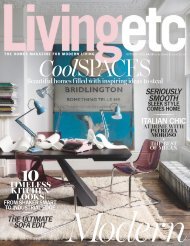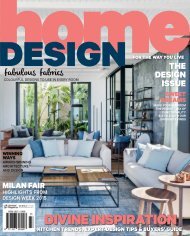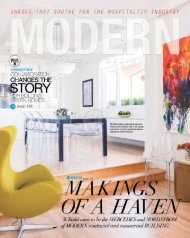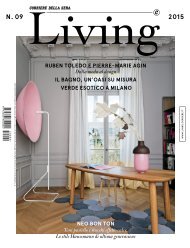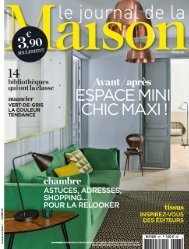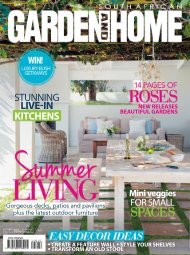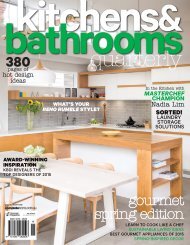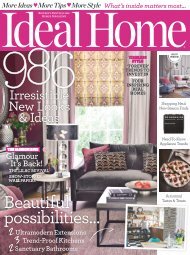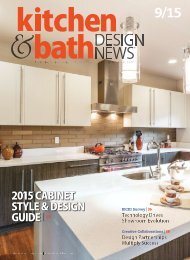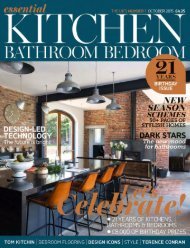DesignBuyBuild_16_2015
Create successful ePaper yourself
Turn your PDF publications into a flip-book with our unique Google optimized e-Paper software.
“Our design was driven by the desire to treat the parent<br />
building and historic fabric with respect, without<br />
subjugating the new pavilion to its aesthetic. The<br />
prominence and integrity of the principal bay is being<br />
restored by cutting back the later additions which<br />
compromised the original massing of the house.<br />
Finkernagel Ross Architects tend to develop designs using a<br />
range of media, as part of the process of considering the brief,<br />
as well as the spatial and technical issues, aesthetics. These<br />
processes are almost always based on scaled representations<br />
to assist architectural ‘thinking’, usually completed by the<br />
time tender documents are sent to the builders who will then<br />
interpret the production information and realise the designs.<br />
There is always a dichotomy between designer and builder,<br />
between representation of a design and its physical embodiment<br />
in the resulting built form.<br />
The new pavilion creates a counterpoint to the original<br />
fabric in terms of materials and detailing and is attached to<br />
the house by frameless glass to articulate their relationship.<br />
The detailing of the extension is designed, again contrary to<br />
the gravitas of its context, to dematerialise it with a floating<br />
brise-soleil seemingly carved from a solid block of marble.<br />
Internally a new space is carved out of the existing fabric<br />
not by demolition of existing walls but by creating an<br />
introverted, fully timber-panelled enclosure that regularises<br />
the current awkward proportions. This transitional space<br />
between the existing rooms of the house and the new<br />
kitchen pavilion takes its inspiration from Sir John Soane’s<br />
breakfast room.”<br />
— Catherine Finkernagel<br />
Catherine Finkernagel adds: “With this project, we are<br />
departing from the traditional processes of design, procurement<br />
and construction, breaching the customary boundaries between<br />
them. The design process, whilst in many ways no different<br />
from any other project, has involved a full scale, 1:1 mockup<br />
section of the most critical part of the construction of the<br />
extension.”<br />
The project demonstrates the practice’s appreciation of cultural<br />
heritage and tradition, and the considered approach taken<br />
when introducing contemporary additions. The new pavilion<br />
at Wedderburn Road is conceived as a ‘contrapuntal’ gesture<br />
– the design celebrates the parent building and yet provides<br />
a confident, unapologetically new, addition to the overall<br />
ensemble.<br />
www.belford-communications.com



